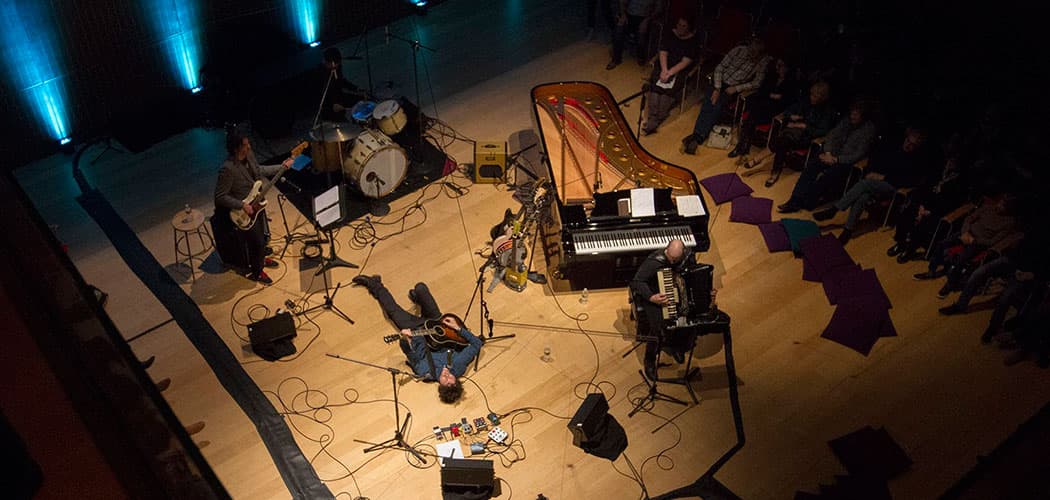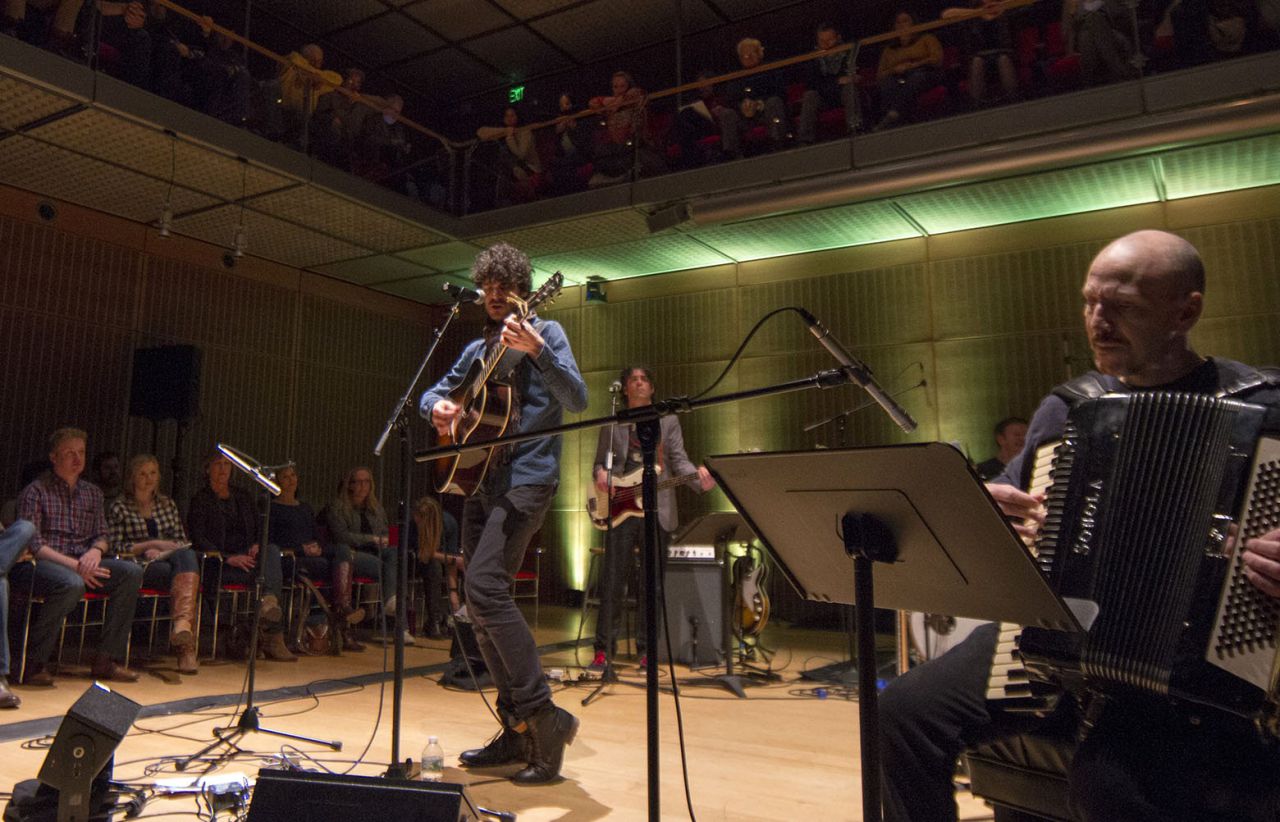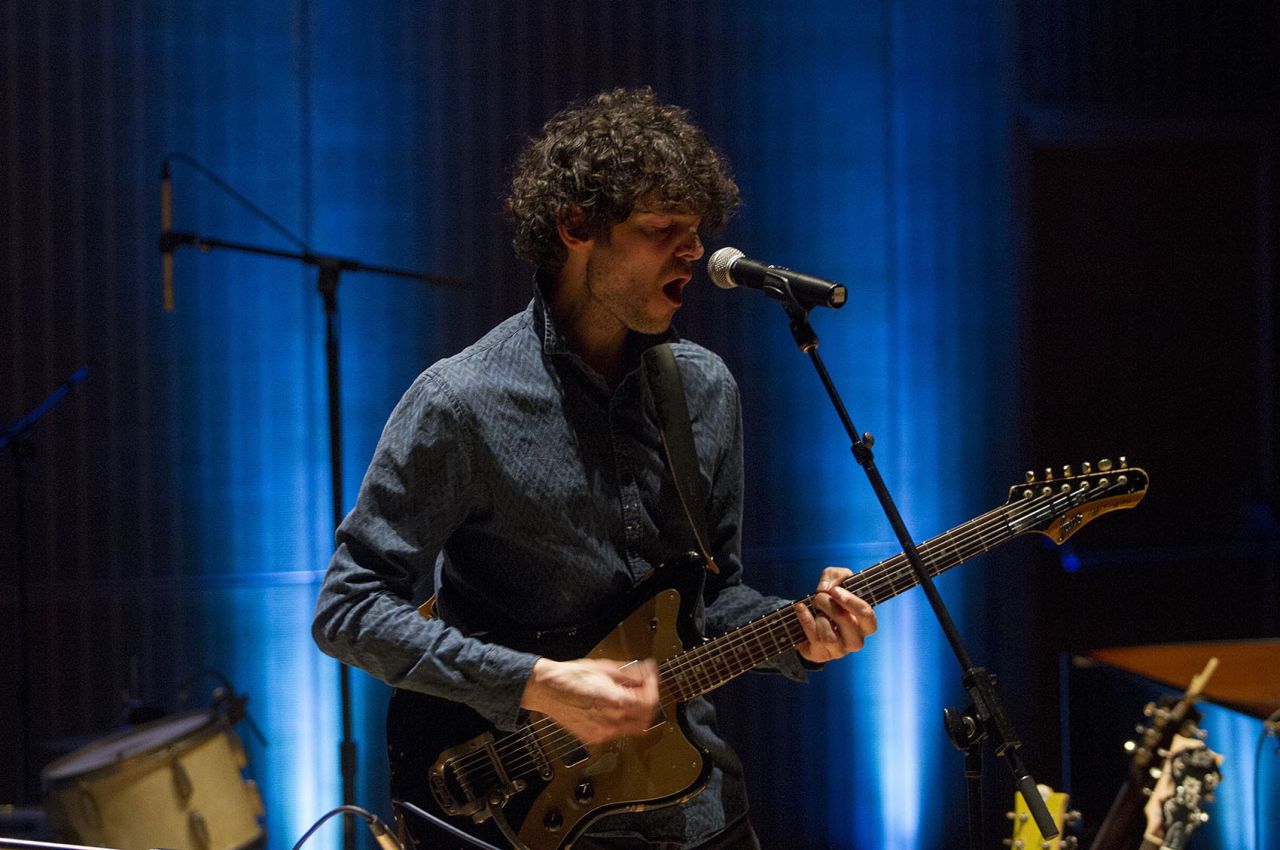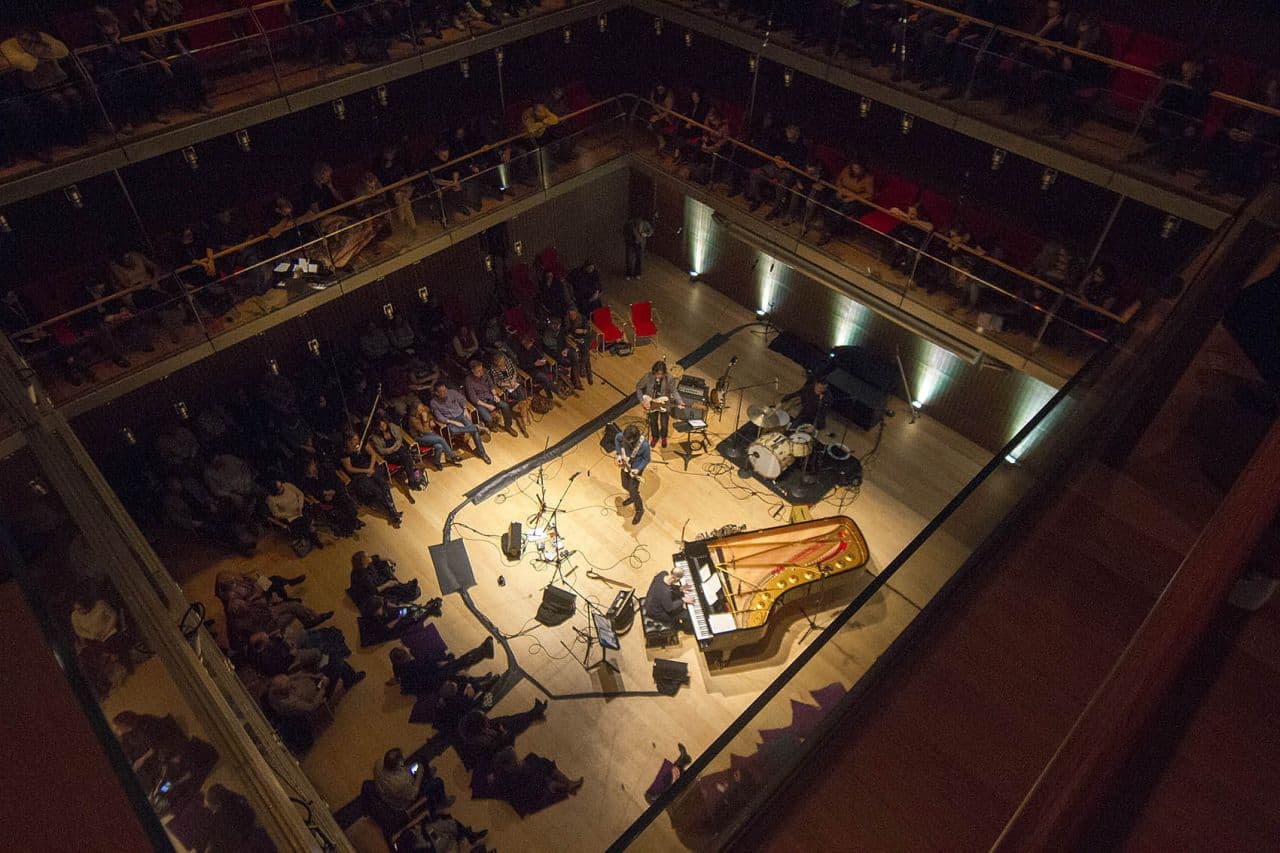Advertisement
Museums Open Their August Halls To Pop Concerts To Open Doors To Wider Audiences
Resume
On a Thursday evening in February, the Boston singer-songwriter Will Dailey and his bandmates took the stage at Calderwood Hall in Boston's Isabella Stewart Gardner Museum. “Stage” is a relative term -- in this case, the band played right on the floor encircled by fold-out chairs and three levels of balconies -- and the band looked vulnerable, surrounded on all sides by an audience who peered down cautiously from above. But Dailey worked the crowd, at one point sprawling out horizontally so that he might more effectively commune with the audience. By the end, everyone was singing along.
Calderwood Hall is possibly the last place you’d expect to see a rock show. The room does not resemble a concert hall so much as a giant modernist cube: white, sleek, acoustically perfect and designed with classical music in mind. But recently, the Gardner has been bringing pop and rock into that hallowed sonic sanctuary. It will do so again on March 31 with the R&B singer Goapele, the final (and sold-out) show in the debut season of a concert series called Rise.
“It’s the first time we’re really tackling a problem that the Gardner Museum has worked on for years and years and years, and that is to try to get rid of the elite image,” says Gardner Museum music curator Scott Nickrenz. “And in so doing, it’s a little bit frustrating because it doesn’t go away.”

Until now, anyway. Rise, which was curated by Boston musicians Simone Scazzocchio and Shea Rose, is an explicit bid to attract new audiences to the Gardner. Nickrenz says that the series, which was recently renewed for next season, has been enormously successful in the regard.
The people the Gardner is trying to reach with Rise are part of a “demographic that doesn’t feel comfortable going into the Gardner Museum,” says Nickrenz. “They’ll walk around someplace else, or they’ll walk close to it, but they won’t walk in.” The museum hopes to attract new people in part by simply programming music that might interest them. But the creators of Rise also work actively to engage communities who might not otherwise visit the museum; to this end, they have partnered with various nonprofits around the city to help distribute a number of free tickets to each concert.
And attracting a younger and more racially diverse audience is part of the mission, too. Co-producer Shea Rose points to the October concert headlined by Malaysian pop star Yuna as an example of an ideal turnout: “There was Asian, and Muslim, and black and white, and there were people from the museum that were patrons who had been going to all the museum shows, and then there were new faces that were young, and students -- and it was just magnificent.”

The Gardner is not the first museum in the area to program the sort of music that might be more at home in a rock club or as the bass-heavy soundtrack to a house party. The Massachusetts Museum of Contemporary Art in North Adams, better known as Mass MoCA, has been showcasing rock ‘n’ roll -- Patti Smith was an early booking -- since its inception in 1999, and the Museum of Fine Arts in Boston regularly programs world, rock and folk. Rock concerts aren’t conceptualized as outreach programs for these institutions, but they do seem to operate as part of a holistic approach to attracting as large and varied an audience as possible.
According to Mass MoCA director Joseph Thompson, concerts and festivals help boost the museum’s profile in a way that ordinary fine art exhibits do not. “Every single weekend you’re generating all kinds of activity in advance of the coming show and reaping the rewards of reviews of past ones,” he says. “That just keeps Mass MoCA fresh in people’s minds in ways that is much harder to do at the more stately pace of visual arts programming.”
Since 2002, Mass MoCA has been well-known as the locale for the famous contemporary classical music happening Bang on a Can Summer Music Festival. But the museum’s reputation as a venue for popular music has grown in recent years, thanks to the annual bluegrass and folk festival FreshGrass, which was founded in 2011, and the biennial Solid Sound Festival, which started in 2010 and is curated by members of the rock band Wilco. Thompson says that on average, Mass MoCA’s visitors are 15 years younger than attendees of other Berkshire cultural institutions; it's likely, he says, that the museum’s rising musical profile is a factor.
But the benefit works both ways. Simply put, bringing popular music into museums shows that it belongs there. “David Byrne: he comes from the world of music, and we think of him as the founder of the Talking Heads,” says Thompson, “but his work quickly migrated over into all kinds of interesting nooks and crannies, including drawing and designing bicycle racks, to making video and photography and visual art. I guess it’s a long way of saying that a lot of the most creative and interesting artists … refuse to accept the kind of old line boundaries that museums, that are fundamentally 19th century constructs, impose upon them.”
“By having something in an institution like the Museum of Fine Arts, Boston, which has such a history and respect, we’re elevating those art forms,” says Jasmine Hagans, curator of lectures, courses and concerts at the MFA. “And when a band that is considered pop music, or avant-garde or progressive or indie rock, comes in here, we’re situating that within all this history and tradition and culture, and all these other artists who have tackled these topics and themes and been artists themselves. It’s pretty cool.”

Similarly, Calderwood Hall’s elegant, almost reverential atmosphere provides a novel context for music that usually lives in more raucous settings. Without the comforting din of a bar crowd or the safety of a raised stage, artists are apt to feel exposed. But the space also invites them to communicate with the audience on a more intimate level.
“If you’ve never heard a hip-hop performance or a country performance, or you don’t ‘get’ the music, it’s really an opportunity for the language of music, the lyrics, the melody, the artist to tell their story,” says Rose. “And I think once artists and bands open up in that way, we pay attention and listen [in] a different way.”
Whether Rise will succeed in erasing the Gardner Museum’s “elite” image remains to be seen. But at the core of pop music-minded programming, from the Gardner to Mass MoCA to the MFA, resides the same belief: that by opening museums to music of all kinds, the doors of these venerable institutions crack open just a little wider, too.
